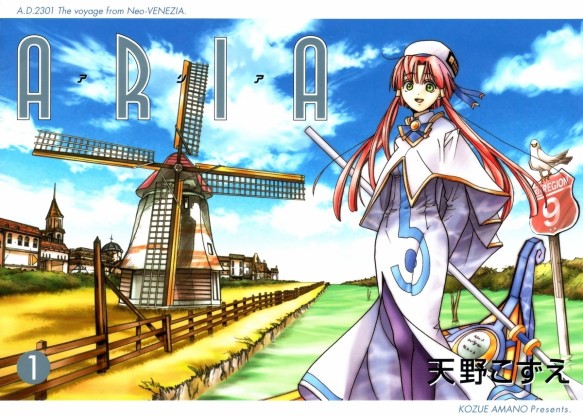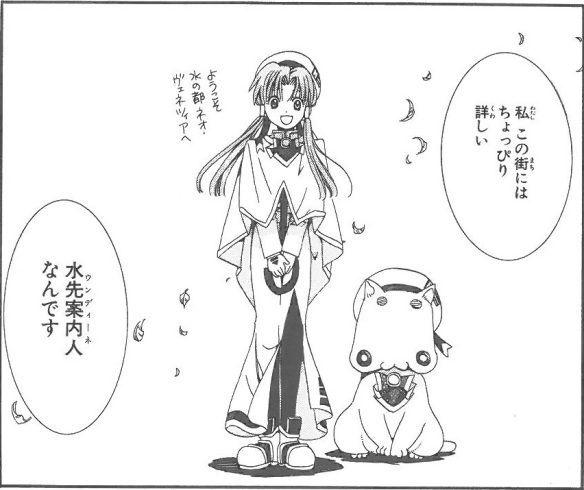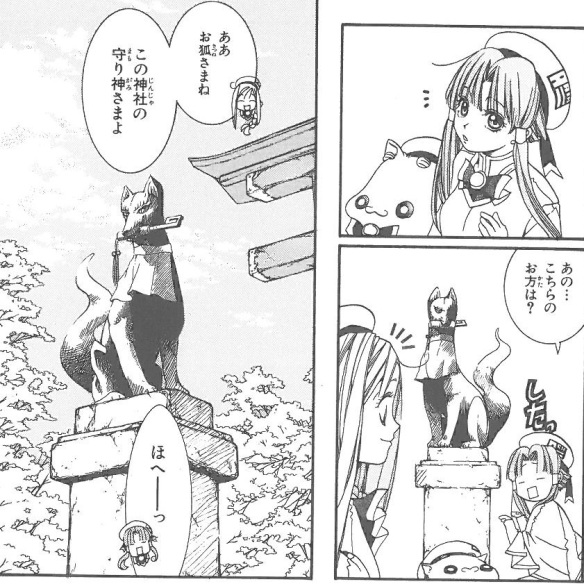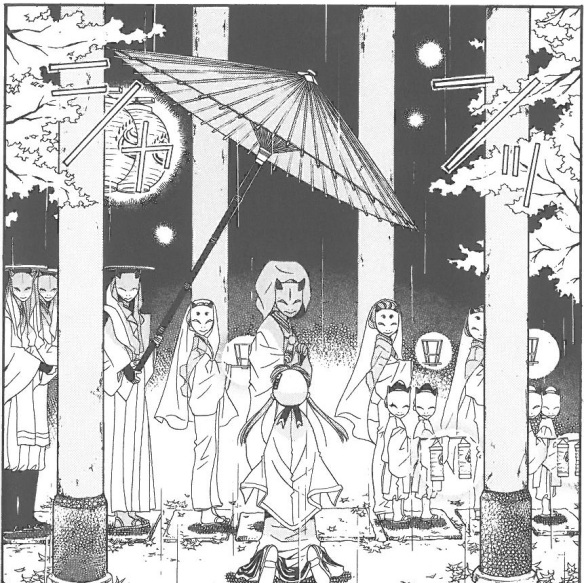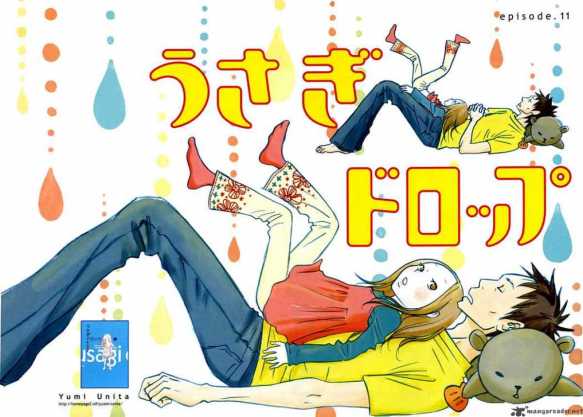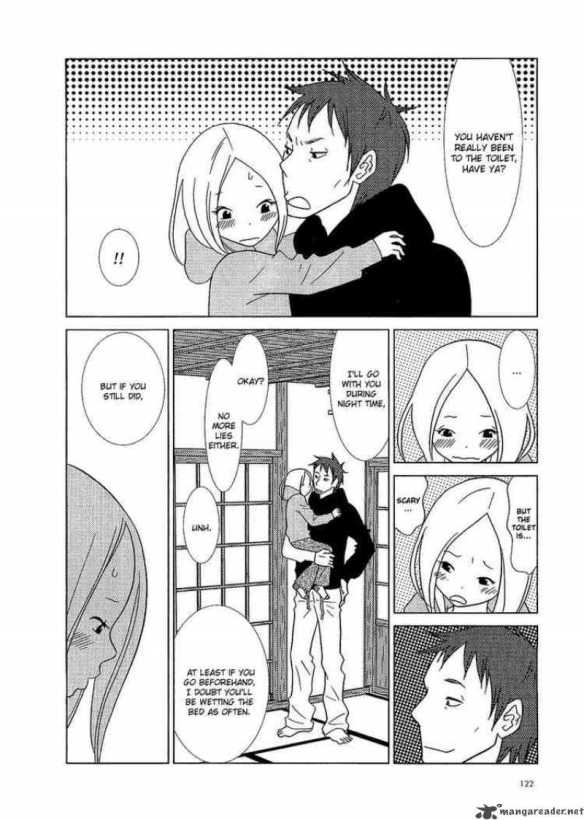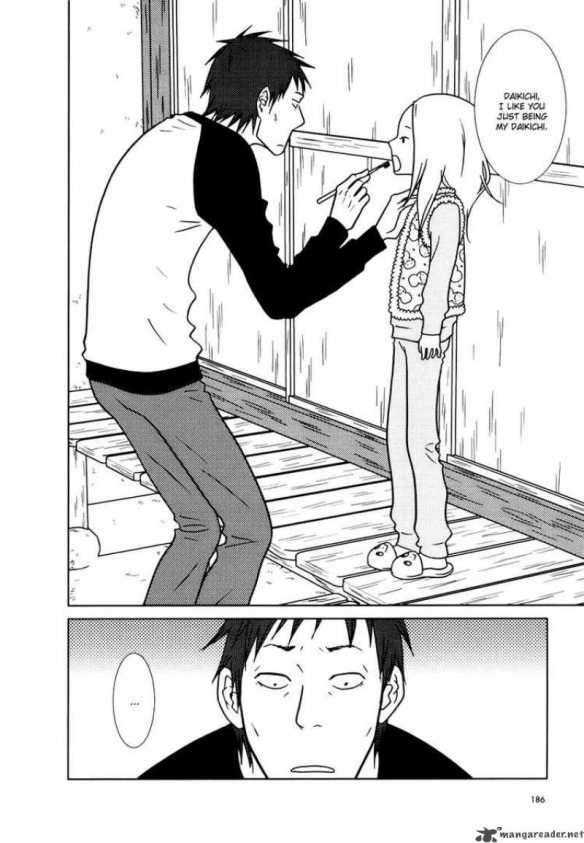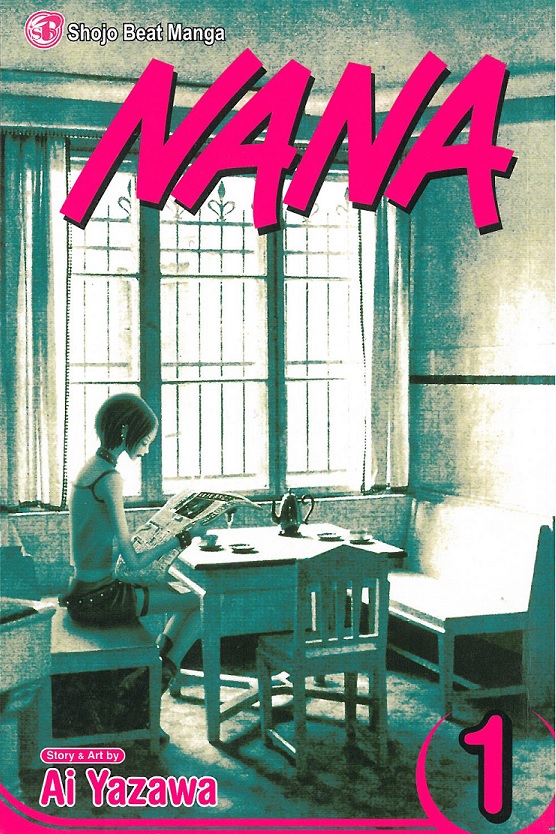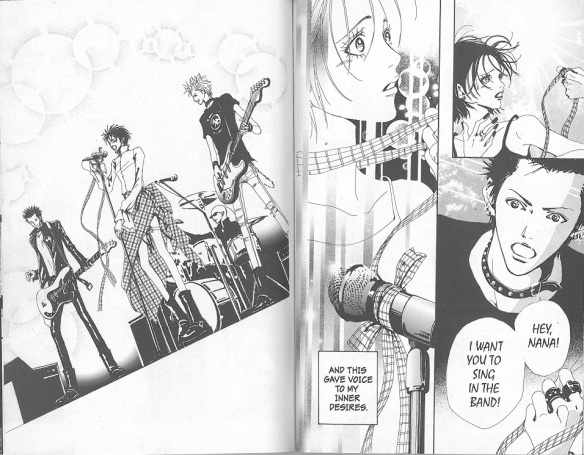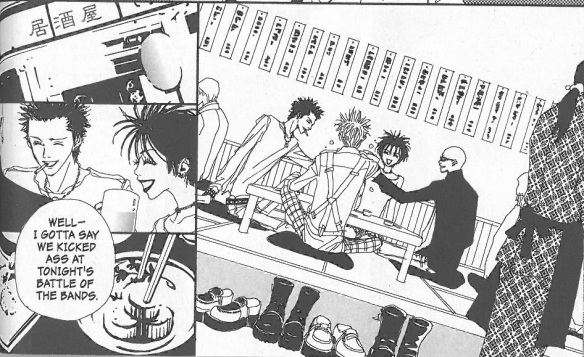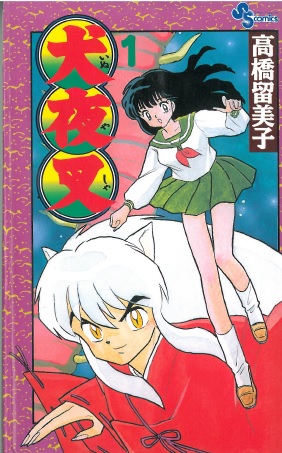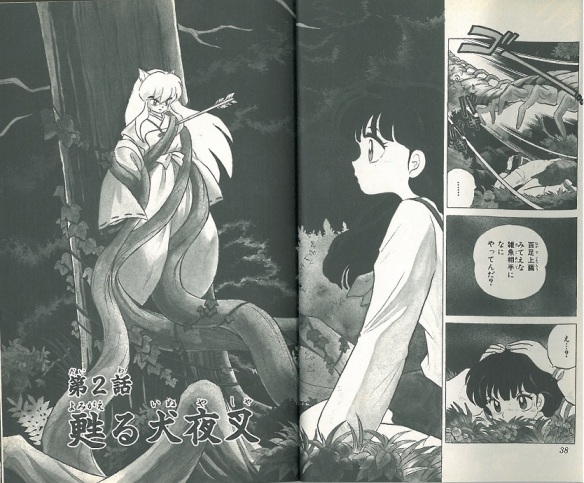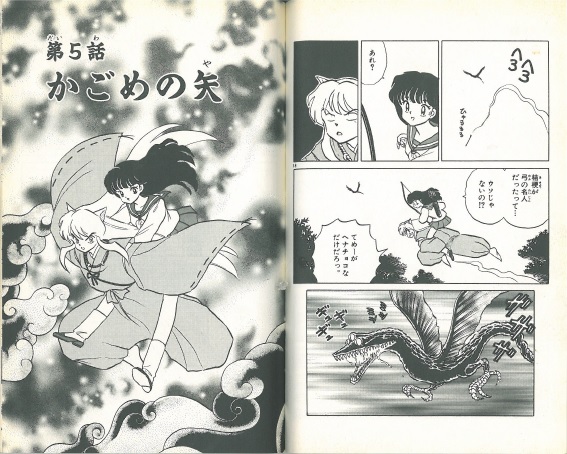This is probably the most relaxing manga ever written.
Meet Akari Mizunashi.
She’s what the Japanese call ‘genki’.
And this is her story.
It seems that in terra-forming Mars humans flooded the planet.
Now it is known as Aqua
Technology is 100 years behind Earth.
Now called Manhome.
But back to Akari.
She left Earth with a dream.
To become a fully qualified Undine (Gondolier) on the canals of Neo Venicia.
She is serving her apprenticeship with the ARIA company.
And that is basically what this manga is about.
Nothing life threatening happens.
Don’t read this expecting Dragon Ball Z type battles.
It is written in the style of letters home.
Everyday stories of a young girl gaining confidence and finding her place.
This manga showcases a couple of aspects of Japanese society that I think you’ll find interesting.
Group effort
I first read this manga back in 2002 when I lived in Japan.
Back then I taught English in a high school in Kawaguchi.
The whole ethos of the Japanese education system was work hard as a team and be cheerful while you do it.
It’s not a bad ethos.
Reading about Akari I was reminded of many of my students who embodied those principles of working hard and striving for self improvement.
Japanese Europhiles
Many Japanese people absolutely love the ancient capitals of Europe.
They have an idea of what these places are like that equates to a fairytale land.
A lot of Ghibili anime are also influenced by this aesthetic for example Kiki’s Delivery Service.
In fact, there is actually a condition called Paris Syndrome which Japanese tourists are particularly susceptible to.
When the reality of the city is so misaligned with the idealized image it literally makes them crazy.
So you can see why creating a fictional Venice with all its ancient beauty intact and a layer of Japanese culture on top would be so appealing for Japanese readers.
O Kami-sama
The last reason I love this edition so much is the chapter called ‘Otenki Ame’ or ‘Rain of the Gods’.
When I lived in Japan I was fascinated by the many Shinto shrines large and small on street corners.
Close to my house was a small fox shrine.
I would always glance over at it as I cycled past.
Sure that the fox statue was watching me with his dark eyes of stone.
It wasn’t creepy.
It was an incredibly special place.
The atmosphere seemed to hang heavy around that little shrine.
So when I read ‘Otenki Ame’ it really made me smile.
Japan is a real dichotomy between ancient and modern.
Sometimes the ancient can seem rigid and frustrating.
But sometimes it can seem worth a thousand times more that all the throwaway culture we consume every day.
Maybe if you’ve visited or lived in Japan you’ll read this comic and also feel that wonderful sense of nastukashii.
Or if you’ve always wanted to visit then read this comic and get a sense of the essential Japanese character from a really sweet, feel-good story.
Also as a side note, Kozue Amano draws cats in a very odd way. The ‘President’ of the ARIA company the Shachou is a chubby white cat.
The cat is actually based on the artists own feline and I think it adds a unique look to the manga which is otherwise pretty standard in it’s aesthetic.
What do you think of ARIA Shachou?
You can buy Aria published in English by ADV Manga online and on Amazon.com.

